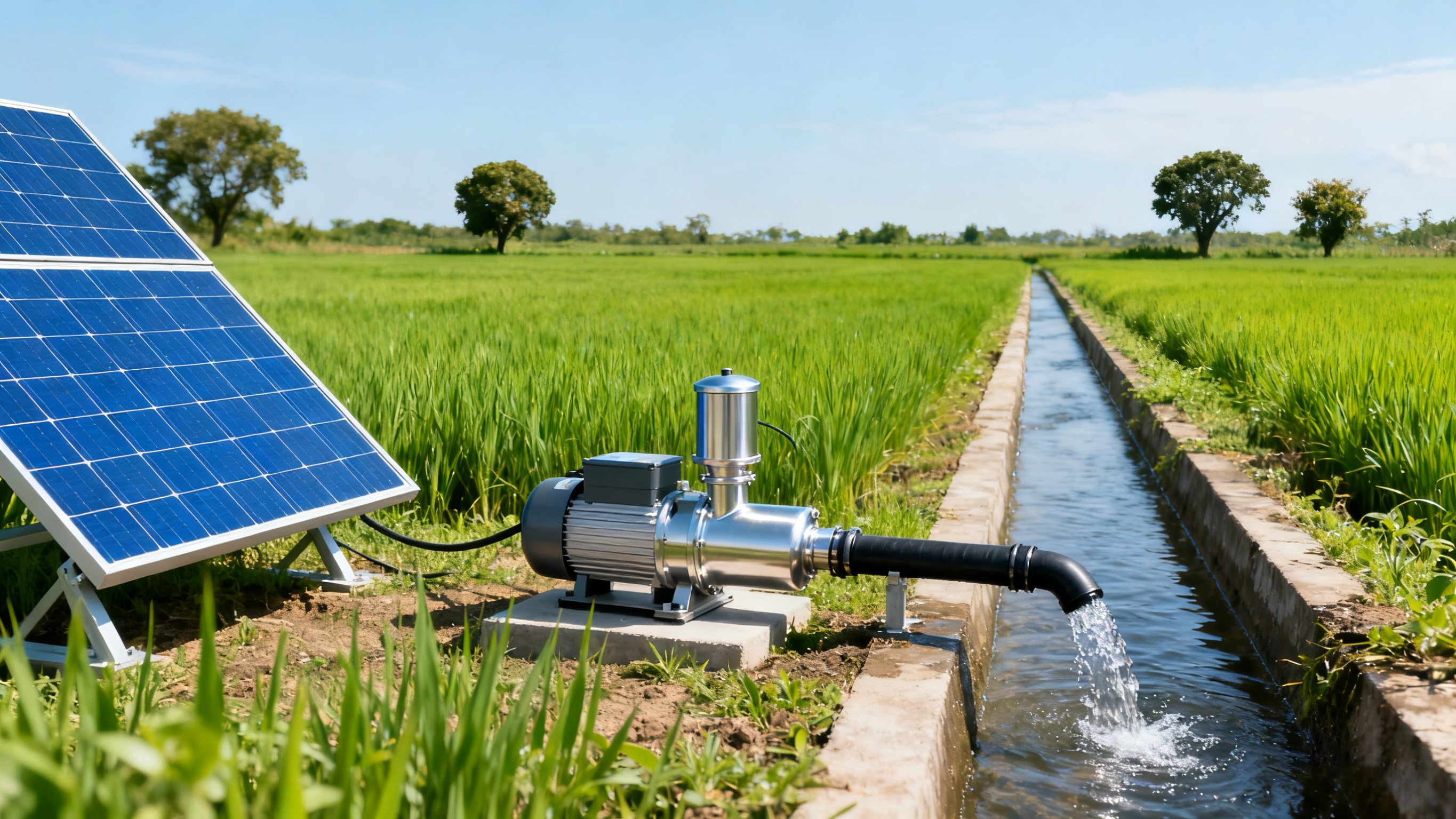Views: 0 Author: Site Editor Publish Time: 2025-10-23 Origin: Site











Solar water pumps are transforming how we access clean water, especially in remote areas where traditional electricity is unavailable or unreliable. These innovative systems harness the sun's energy to move water from underground sources, wells, or surface water bodies to where it's needed most.
Understanding how a solar water pump works can help you determine if this sustainable technology is right for your agricultural, residential, or commercial water needs. This comprehensive guide breaks down the mechanics, components, and benefits of solar-powered water pumping systems.
A solar water pump operates on a straightforward principle: converting sunlight into electrical energy, which then powers a motor that drives the pump mechanism. This process eliminates the need for grid electricity or fuel-powered generators, making it an environmentally friendly and cost-effective solution for water pumping applications.
The system captures solar energy through photovoltaic panels, converts it to usable electrical power, and channels that power to operate the pump motor. The entire process happens automatically during daylight hours, with the pump's performance directly correlating to the intensity of available sunlight.
Solar panels form the heart of any solar water pump system. These photovoltaic modules contain silicon cells that convert sunlight directly into direct current (DC) electricity. The number and wattage of panels required depend on the pump's power requirements and the amount of water that needs to be moved.
Most residential solar water pump systems use between 100 to 400 watts of solar panels, while larger agricultural or commercial applications may require several kilowatts of solar capacity.
The pump motor converts electrical energy from the solar panels into mechanical energy that moves water. Solar water pumps typically use either AC (alternating current) or DC motors, each with distinct advantages.
DC motors are more efficient for smaller systems and work directly with solar panel output, while AC motors are better suited for high-volume applications and can integrate with existing electrical infrastructure.
The controller manages the electrical flow between the solar panels and the pump motor. For DC pump systems, the controller regulates voltage and protects against electrical surges. AC pump systems require an inverter to convert DC electricity from the solar panels into AC power for the motor.
Modern controllers often include maximum power point tracking (MPPT) technology, which optimizes the electrical transfer efficiency and ensures the pump operates at peak performance throughout varying sunlight conditions.
Many solar water pump installations include a storage tank to hold pumped water for use during nighttime hours or cloudy periods. This component ensures a continuous water supply even when the solar pump isn't actively operating.
Surface pumps are installed above ground and draw water from shallow sources like ponds, rivers, or shallow wells. These pumps are ideal for irrigation systems and applications where the water source is less than 20 feet below the surface.
Surface pumps are generally easier to install and maintain compared to submersible alternatives, making them popular for agricultural applications and livestock watering systems.
Submersible pumps are designed to operate underwater, typically installed in deep wells or boreholes. These pumps can lift water from depths of several hundred feet, making them suitable for domestic water supply and deep groundwater extraction.
The submersible design protects the motor from weather exposure and reduces noise during operation, though installation and maintenance require specialized equipment and expertise.
When sunlight strikes the solar panels, photovoltaic cells generate DC electricity through the photovoltaic effect. The amount of electricity produced depends on factors like solar irradiance, panel efficiency, temperature, and shading conditions.
During peak sunlight hours, typically between 9 AM and 4 PM, solar panels generate maximum power output, allowing the pump to operate at full capacity.
The raw electricity from solar panels requires conditioning before it can effectively power the pump motor. The controller or inverter processes this electrical energy, ensuring stable voltage and frequency suitable for the motor's requirements.
Advanced controllers incorporate protective features like low-voltage shutdown, overvoltage protection, and dry-run protection to prevent damage to the pump motor.
Once the motor receives conditioned electrical power, it drives the pump mechanism to create water flow. Centrifugal pumps use an impeller to accelerate water and create pressure, while positive displacement pumps use pistons or diaphragms to move water in measured quantities.
The pumping rate varies throughout the day as solar energy availability changes, with peak performance occurring during midday hours when sunlight is strongest.
Solar water pump systems offer numerous benefits over traditional fuel-powered or grid-connected alternatives. These systems operate silently, produce zero emissions during operation, and require minimal maintenance once installed.
The absence of fuel costs makes solar pumps economically attractive, especially in remote locations where fuel transportation is expensive or unreliable. Additionally, solar pumps can operate for 20-25 years with proper maintenance, providing long-term water access solutions.
Solar pumps also offer excellent scalability, allowing users to expand system capacity by adding more solar panels or upgrading pump components as water demands increase.

Several factors influence solar water pumpefficiency and performance. Proper sizing ensures the system meets water demand without oversizing, which increases unnecessary costs.
Geographic location affects solar resource availability, with areas receiving more annual sunshine requiring smaller solar arrays for the same pumping capacity. Seasonal variations in sunlight should also be considered when designing the system.
Water source characteristics, including depth, quality, and flow rate, directly impact pump selection and system design requirements.
Solar water pumps represent a sustainable, reliable solution for water access challenges across diverse applications. By understanding how these systems work, you can make informed decisions about implementing solar pumping technology for your specific needs.
Whether you're considering a small residential system or a large-scale agricultural installation, solar water pumps offer an environmentally responsible approach to water management that reduces operating costs while ensuring reliable water access for years to come.